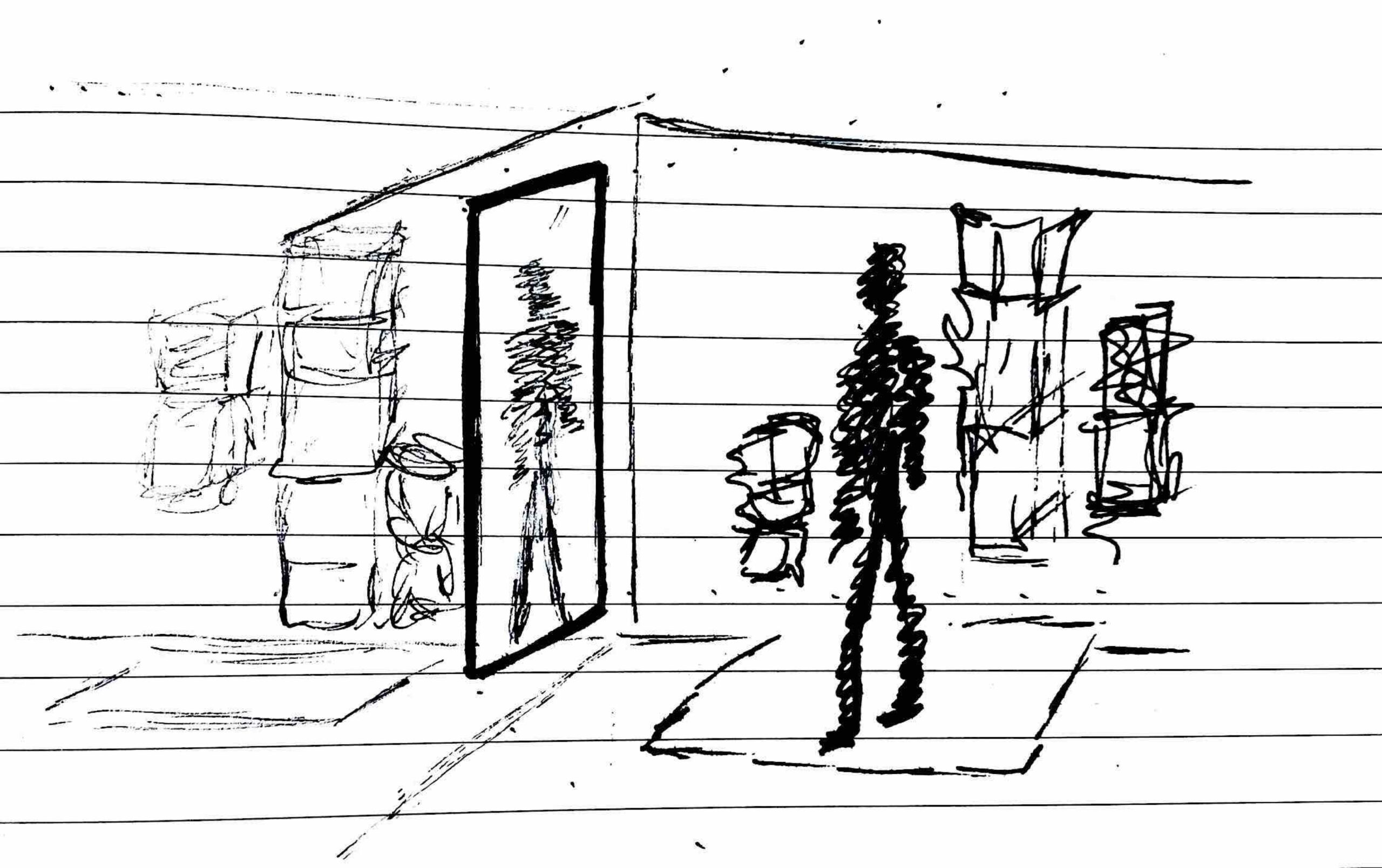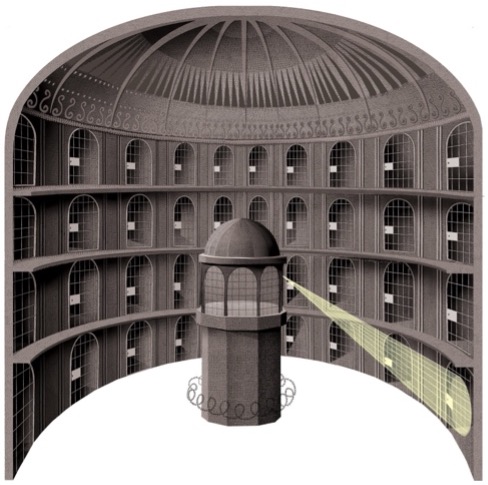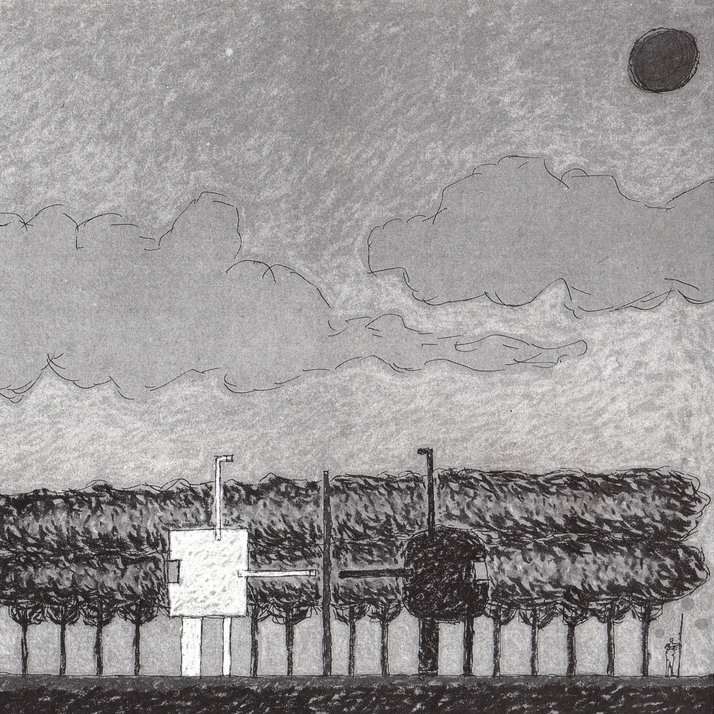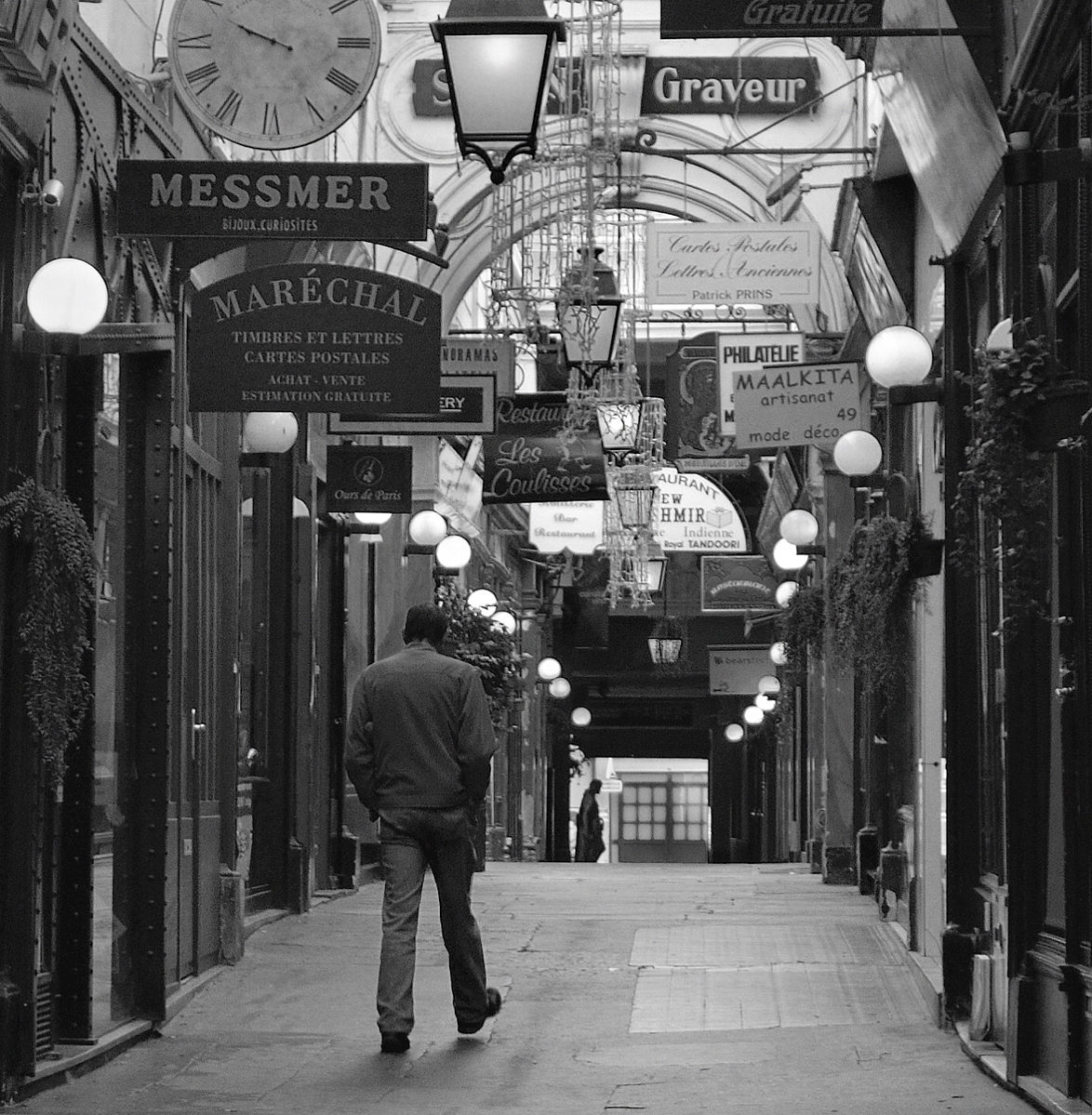How can space make us feel invisible, even though we remain present?
As a designer, I seek ways to make my relationship to the world visible through space. For me, there is no strict boundary between what is seen and unseen; rather, a gradual transition, like a gradient in which one slowly fades into the other. There is always something in between, not fully visible, yet not entirely invisible.
This layered quality raises questions about balance. How do we move between these worlds? And can architecture support us in this process, by strengthening our personal qualities and giving us the space to embrace who we are?
Here you read a few reflections from my thesis IN_Visible, which have found a direct translation in my graduation project. The design is therefore not only a spatial outcome, but also an exploration of the visible and invisible layers of identity and experience.


The Mirror
A mirror can be seen as an in-between space, reflecting an equal experience of both worlds. A mirror is a utopia, because it is a place without a place. I see myself in the mirror at a location where I am not, in an unreal space unfolding behind a surface. It is almost as if a shadow becomes visible, allowing me to see myself in a place where I am absent. That is the utopia of the mirror.

Panopticon
Dion Kooijman, former Associate Professor at the Faculty of Architecture at TU Delft, compares flexible working to a panopticon: a construction in which the overseer, positioned at the center of the space, can observe the cell inhabitants, while they cannot see him. They only have a sense of his presence.
Peeping
Good Neighbor House, 1975, John Hejduk.
With this work, Hejduk was not searching for a solution but rather exploring differences in order to provoke. To me, it speaks about how we, as humans, deal with our privacy and our curiosity about the outside world. On the one hand, we want to keep the other continuously in sight, while on the other hand, we want to remain safely positioned ourselves , as if we are birdwatching from inside a hide.


Passages
The passages are the most characteristic example of this boundary shift. These covered shopping streets, which emerged in the 19th century, contribute to the use of the open inner courtyard and were commercially exploited by entrepreneurs. Because there is no traffic, they become narrow pedestrian streets, allowing you to see the shop windows on both sides at a glance.
They make shops (private spaces) easily accessible to a new audience. Through the passage, the boundary between public and private space becomes blurred, as it becomes more open and inviting for everyone.